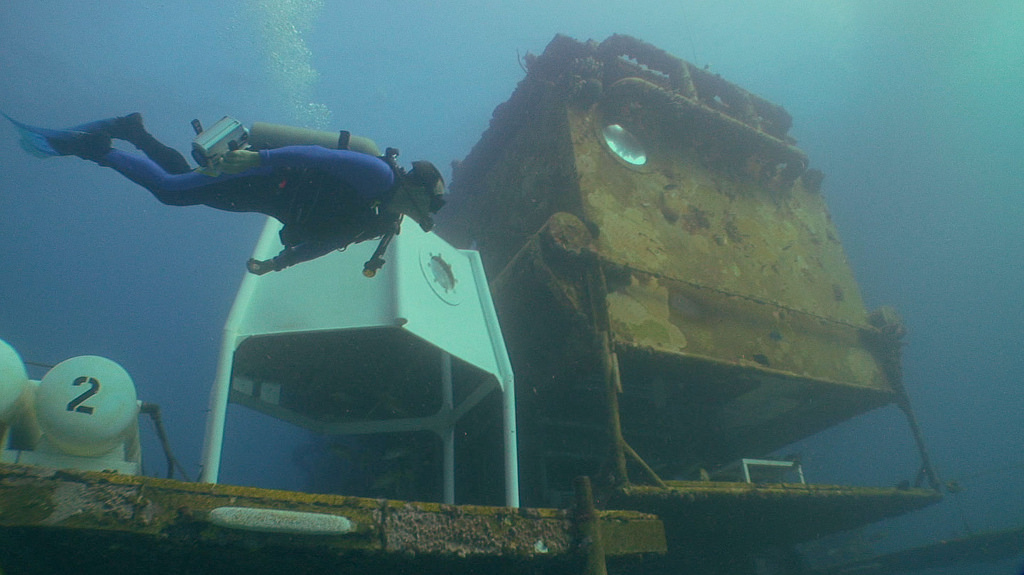
In DC Film's recent action-packed blockbuster Aquaman, the superhero flaunts many spectacular powers. While the half-human, half-Atlantean’s ability to heal others and withstand intense heat may be hard for scientists to emulate, here are three Aquaman superpowers that may be available to all of us in the very near future.
Communicating with sea creatures

Aquaman is famous for his ability to telepathically communicate with all forms of sea life and enroll them to do his bidding. The superhero can summon whales and octopuses to plug in holes in sinking ships, or convince dolphins to give him a joy ride, without uttering a word. Though humans may never be able to garner such control over sea life, if Gavagai AB has its way, we may soon at least be able to interact intelligently with dolphins. The Swedish startup, in collaboration with Stockholm’s KTH Royal Institute of Technology, is currently trying to decode recordings from captive bottlenose dolphins using their proprietary artificial intelligence (AI) language analysis technology. If all goes according to plan, the company hopes to compile a dictionary of dolphin language soon.
“We hope to be able to understand dolphins with the help of artificial intelligence technology,” KTH adjunct professor and Gavagai co-founder Jussi Karlgren said to Bloomberg. “We know that dolphins have a complex communication system, but we don’t know what they are talking about yet.”
Breathing underwater

Seeing Aquaman glide amid the glowing whales and huge coral reef condos in the mythical underwater kingdom of Atlantis may have you hoping to do the same. However, while the half-human, half-Atlantean is easily able to extract oxygen from the seawater, mere mortals are not as lucky. But that may change soon thanks to Jun Kamei’s innovative 3-D printed Amphibio. The flexible gill-like rings, inspired by airborne insects’ ability to breathe underwater are designed to expel carbon dioxide and absorb oxygen from the surrounding water, using osmosis.
The materials scientist at the RCA-IIS Tokyo Design Lab explains, “The system is enclosed with an airtight one-way valve, thus the only way oxygen could be replenished in the gill is through the membrane from the surrounding water. The surrounding water has oxygen dissolved into it, and because the percentage of oxygen is low inside of the gill, these oxygen molecules in the water travel through the membrane inside of the gill to compensate the concentration difference. A similar thing happens for the excess CO2 molecules, which in contrary travel from inside of the gill to the surrounding water.” Though the invention, unveiled on June 2018, needs to be developed further, the future sure looks bright for ocean enthusiasts.
Establishing underwater cities

While Aquaman’s ability to seamlessly transition from water to land may not appear to be a superpower, it is probably one of his most potent skills. That’s because the weight of water is hard for humans to withstand. George Elvin at North Carolina State University estimates that the maximum depth the body can tolerate being underwater unprotected is about 1,000 feet (304 meters). Anything beyond that would cause the body's air sacks, including lungs, to collapse from the intense water pressure, resulting in instant death.
Emerging from underwater depths, especially at Aquaman’s rapid speed, is equally treacherous. As the pressure decreases, gases dissolved inside our body start to form bubbles, resulting in ailments ranging from joint aches to ruptured blood vessels. Though the discomfort, dubbed “decompression sickness,” is usually short-lived, it can, in extreme cases, result in death as well.
Given the challenges, it may sound impossible for humans to live underwater. However, a few “superhero” scientists have been able to achieve the feat for up to ten days at a time at the world’s only underwater research facility, the Aquarius Reef Base, which sits 15 meters (about 50 feet) below the surface in the Gulf of Mexico, off Florida’s west coast.
Resources: sciencenewsforstudents, livescience.com, wired.com, wikipedia.org
